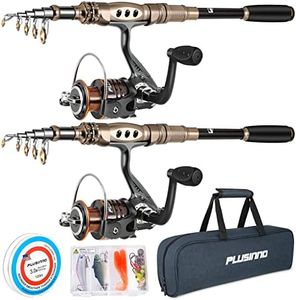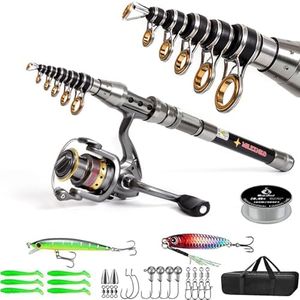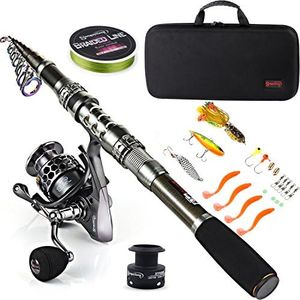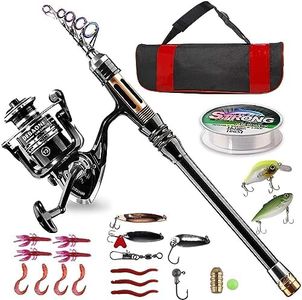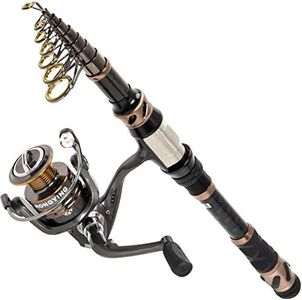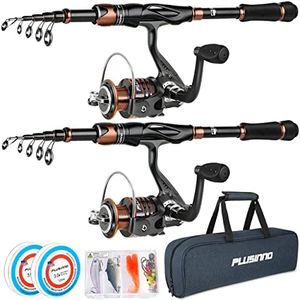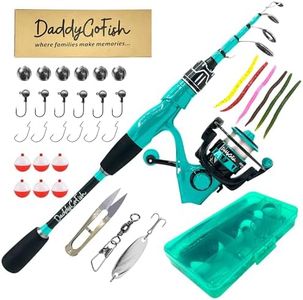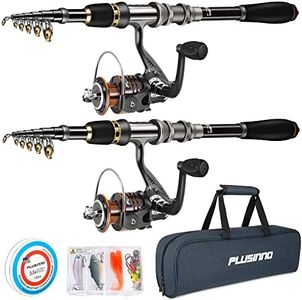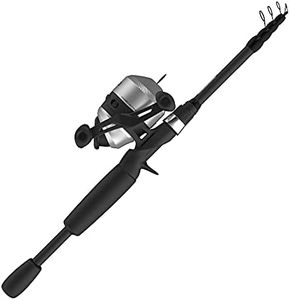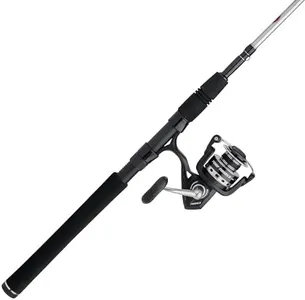We Use CookiesWe use cookies to enhance the security, performance,
functionality and for analytical and promotional activities. By continuing to browse this site you
are agreeing to our privacy policy
10 Best Telescopic Fishing Rods
From leading brands and best sellers available on the web.Buying Guide for the Best Telescopic Fishing Rods
Choosing a telescopic fishing rod can make fishing trips more convenient and enjoyable because these rods are designed to collapse down into a compact size for easy storage and transport. When you’re deciding which telescopic fishing rod is best for you, it’s important to think about where and how you’ll be fishing, what type of fish you’re targeting, and your experience level. Focus on key features to ensure the rod matches your needs, and always handle one in person if you can, to see if it feels comfortable.Rod LengthRod length refers to how long the fishing rod is when it’s fully extended. It’s important because it affects how far you can cast, your control over the line, and the size of fish you can handle. Telescopic rods range from about 6 feet to over 12 feet. Shorter rods (6-7 feet) are usually easier to handle and transport and are good for small streams or beginners. Medium-length rods (7-9 feet) provide a good balance and are suitable for various environments. Longer rods (10 feet and up) allow for longer casts and are needed for surf fishing or reaching distant spots, but may be heavier and require more skill. To choose the right length, consider the places where you’ll fish most often and the size of fish you expect to catch.
Rod MaterialRod material usually refers to what the rod is made of—typically fiberglass, carbon fiber (graphite), or a combination. The material affects strength, weight, flexibility, and sensitivity. Fiberglass rods are tougher and more flexible, making them suitable for beginners and for fishing in rough conditions. Carbon fiber rods are lighter and more sensitive, letting you feel smaller bites and respond quickly; these are good for more experienced fishers or those targeting smaller, more nimble fish. A composite rod blends attributes of both. Think about your experience and whether you prefer more durability or more sensitivity.
Collapsed LengthCollapsed length is how short the rod gets when fully packed down, which matters for portability and storage. If you need to carry the rod in a backpack, suitcase, or small vehicle, look for a rod with a shorter collapsed length (sometimes under 18 inches). Travel fishers or hikers should prioritize compact rods, while those who always drive to their fishing spots may not need the shortest option.
Rod Action and PowerAction describes how much the rod bends when you put pressure on it, while power is about how much force it takes to bend. A fast action rod bends mostly at the tip and is good for quick hook sets and more control, suitable for targeting aggressive fish. Slow action rods bend along a larger part and are forgiving, making them better for beginners or for casting lighter lures. Power ranges from ultralight (for tiny fish) to heavy (for large fish). Think about what size fish you’ll encounter and how you like your rod to feel—lighter fish and finesse techniques work best with light power and slower action, while heavier power rods are necessary for bigger catches.
Guides and Reel Seat QualityGuides are the rings through which fishing line travels, and the reel seat is the part where you attach your reel. Good quality guides reduce friction and help prevent your line from getting damaged, which is important for smooth casting and longevity. The reel seat should hold your reel securely, even when under stress. Higher-quality materials like stainless steel or ceramic in the guides, and firm construction for the reel seat, are worth looking for if you’ll use the rod often or for bigger fish. Check for smooth, sturdy construction—avoid rods with rough edges or plastic parts that easily come loose.
Handle Type and ComfortThe handle is the part you hold while fishing. Different materials, such as EVA foam or cork, offer varying degrees of comfort, grip, and durability. If you expect to fish for long periods, look for a handle that feels comfortable in your hand and isn’t too narrow or slippery. EVA foam is generally soft and less expensive, while cork provides a traditional feel and tends to be lighter. Larger handles may be more comfortable for bigger hands or for long sessions.
